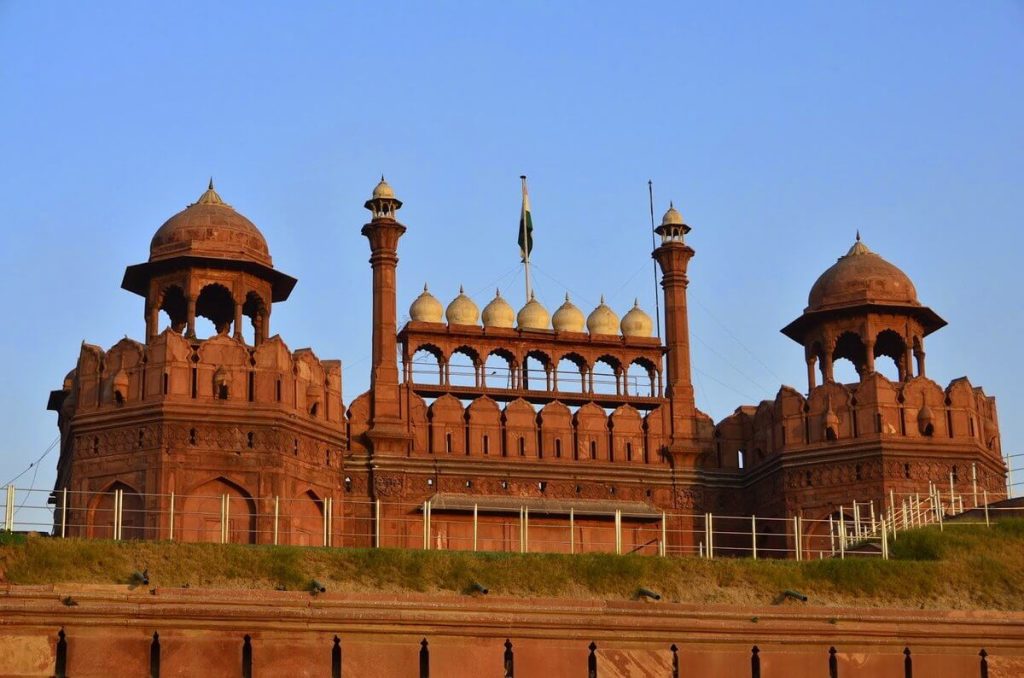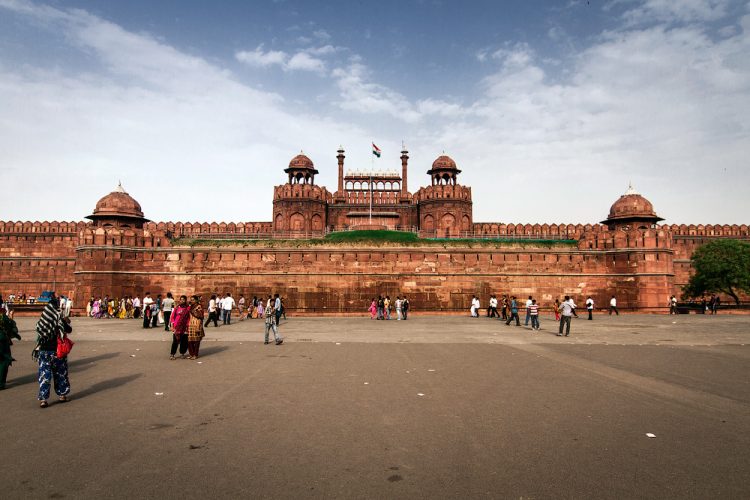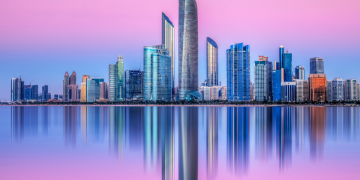In this ancient and mysterious land of India, countless historical sites are like bright pearls, connecting a magnificent epic. Among them, the Red Fort of Delhi is undoubtedly an important carrier of Indian history and culture. With its unique geographical location, rich historical background and unique architectural features, it has become the focus of attention in India and even the world. This article will take you deep into the mystery of Delhi’s Red Fort and feel the charm of this historic treasure.
Delhi’s Red Fort: The royal jewel in the heart of India
Located in the heart of the Indian capital city of Delhi, the Red Fort of Delhi is a palace on the banks of the Yamuna River that is closely linked to the ancient Indian civilization. As the imperial palace of the Mughal Empire, Delhi’s Red Fort has witnessed the vicissitudes of Indian history and carried countless legends. Its name “Red Fort” derives from the reddish-brown appearance of its main building, which shines brightly in the sun, like a bright pearl inlaid on the land of India.
The Red Fort is ideally situated in the heart of Delhi City, surrounded by lush trees and tranquil lakes. The palace was not only the political, cultural and religious center of the Mughal Empire, but also an important witness to the history of India. Here, we can feel the prosperity and glory of India’s ancient civilization, but also appreciate the architectural style and artistic charm of the Mughal Empire.

Witness to history: the glory and vicissitudes of the Red Fort in Delhi
The Red Fort of Delhi has an important place in the history of India. Since the time of Emperor Shah Jahan, when the capital of the Mughal Empire was moved from Agra to Delhi, the Red Fort of Delhi became the imperial palace. The palace has witnessed the rise and fall of the Mughal Empire, as well as the rise and fall of several Indian dynasties. During the colonial period, Delhi’s Red Fort became a symbol of British rule over India. However, after India’s independence, the Red Fort of Delhi became a symbol of the Indian people’s struggle for freedom and independence, which has important historical significance.
The historical changes of the Red Fort in Delhi also reflect the social conditions at that time. During the Mughal Empire, India was a multi-ethnic, multi-religious and multi-cultural country. The architectural style of the Red Fort in Delhi blends Islamic and Hindu elements, reflecting the diversity and inclusiveness of society at that time. The decoration and murals inside the palace show the prosperity and cultural development of India’s ancient civilization. These rich historical materials and cultural heritage make the Red Fort of Delhi a charming museum, attracting countless visitors to explore the secrets of history.
Architectural treasures: the architectural style and characteristics of the Red Fort in Delhi
The architecture of the Red Fort in Delhi is unique and has characteristics typical of Mughal style Islamic architecture. The walls of the palace are high to the sky, thick and strong, giving people a feeling of solemn and solemn. The towers, pavilions, balconies and exquisitely carved Windows on the walls all reflect the exquisite craftsmanship and unique charm of ancient Indian architecture. The whole building complex covers a vast area, divided into a number of courtyards and halls, each courtyard and hall are unique, full of art.
One of the most notable is the Jahangiri Mahal Palace, which was once a place for emperors to rest and host grand banquets. The interior of the palace is gorgeously and elegantly decorated, the walls are inlaid with gems and exquisite murals, showing the prosperity and glory of India’s ancient civilization. These murals depict the ancient myths, legends, historical stories and natural landscapes of India, and each painting is full of poetry and imagination.
The architectural style of the Red Fort in Delhi also embodies the aesthetic principles of symmetry, balance and proportion. The layout of the palace is reasonable and the function is clear, which not only meets the needs of the royal life, but also reflects the majesty and honor of the imperial power. This people-oriented, functional and comfortable design concept has important reference significance for modern urban design.

Cultural heritage: The implications of Delhi’s Red Fort for modern Indian urban design
As a treasure of Indian history and culture, the architectural style and characteristics of the Red Fort in Delhi have had a profound influence on modern Indian urban design. First of all, the architectural style of Delhi’s Red Fort reflects the prosperity and brilliance of ancient Indian civilization, and provides rich historical and cultural deposits for modern Indian urban design. In modern urban design, we can learn from the architectural style and artistic elements of Delhi’s Red Fort and integrate them into modern buildings to make the city more historical and cultural.
The architectural features of Delhi’s Red Fort emphasize the aesthetic principles of symmetry, balance and proportion. These principles still have important reference value in modern urban design. Modern urban design should pay attention to the coordination and unity between buildings and pursue the balance and harmony of space. At the same time, we should also pay attention to the functionality and comfort of buildings, and the people-oriented design concept should run through the entire urban design.
The Red Fort also embodies the diversity and inclusiveness of society at that time. This kind of diversity and inclusiveness is also an important goal pursued by modern urban design. In modern urban design, we should respect different cultures and traditions and encourage diversity and inclusion. By absorbing the essence and characteristics of different cultures, we can create more attractive and dynamic modern cities.
Delhi Red Fort is a treasure of Indian history and culture. With its unique geographical location, rich historical background and unique architectural features, it attracts countless tourists to explore the story and significance behind it. The palace has witnessed the rise and fall of several Indian dynasties, the struggles of the colonial period and the new starting point after independence, and has great historical significance and cultural value. At the same time, the architectural style and characteristics of Delhi’s Red Fort also provide rich inspiration and reference for modern Indian urban design. Let’s walk into the Red Fort of Delhi, a historical witness and cultural legend, and feel its unique charm and profound historical connotation.





















